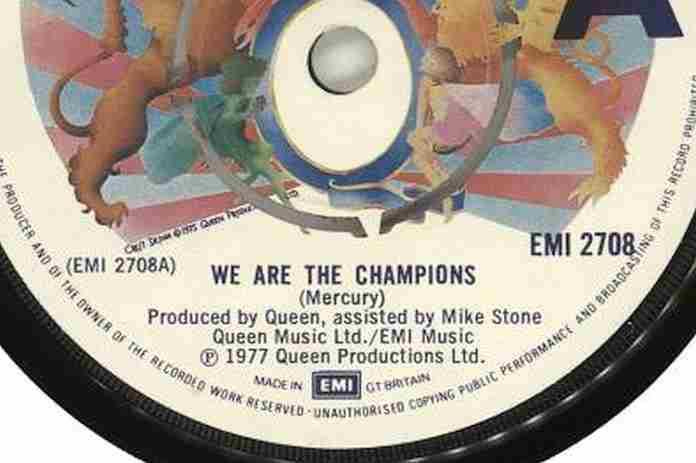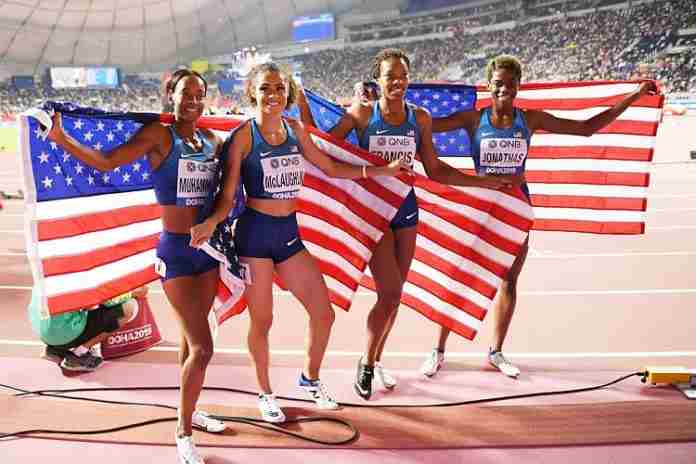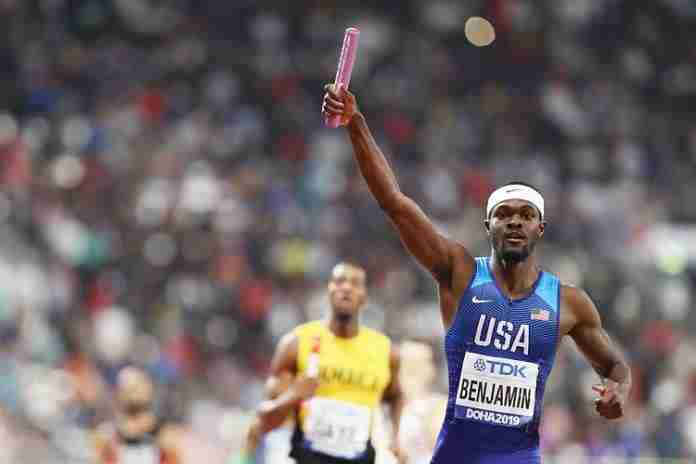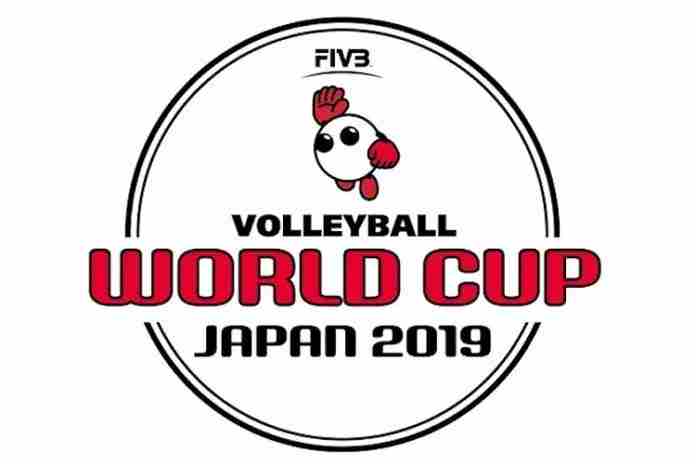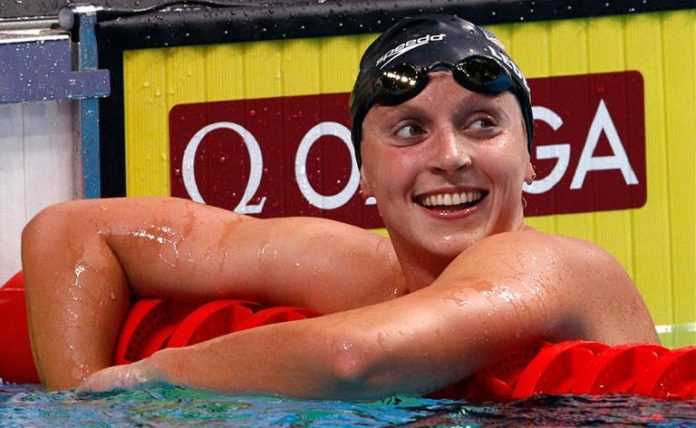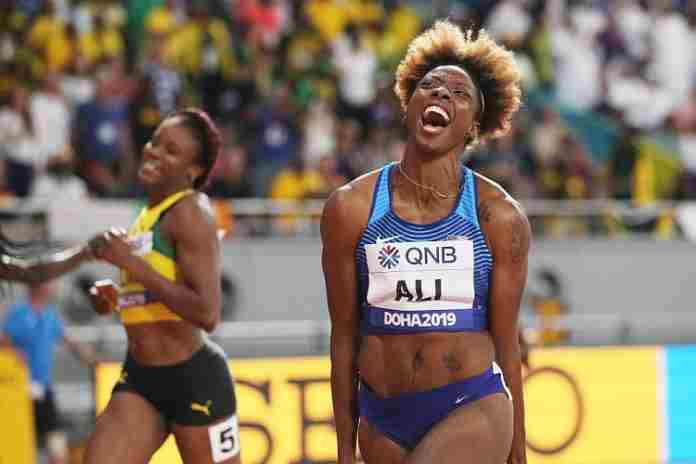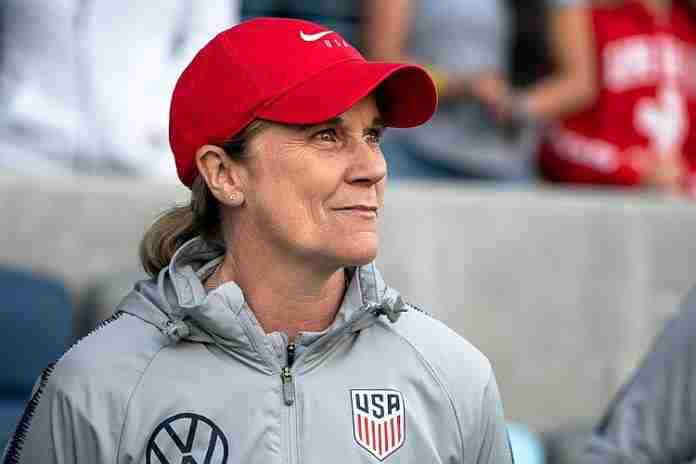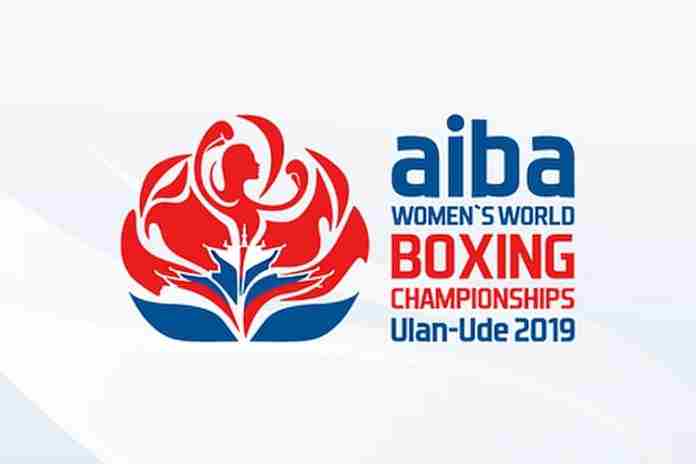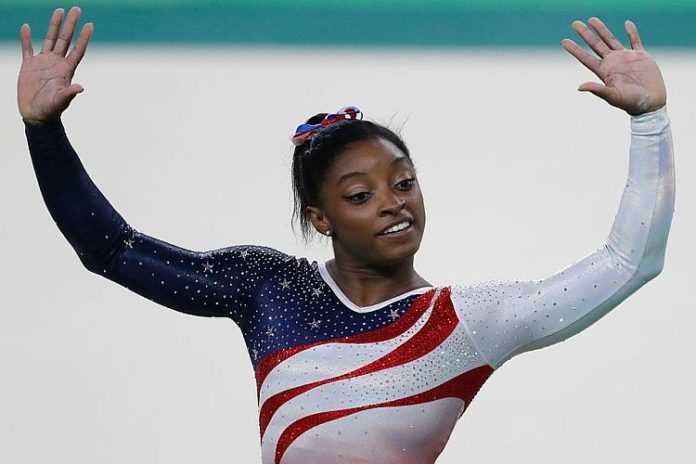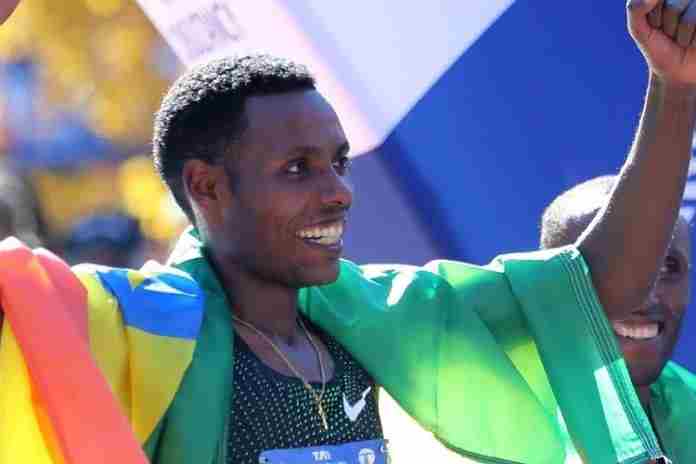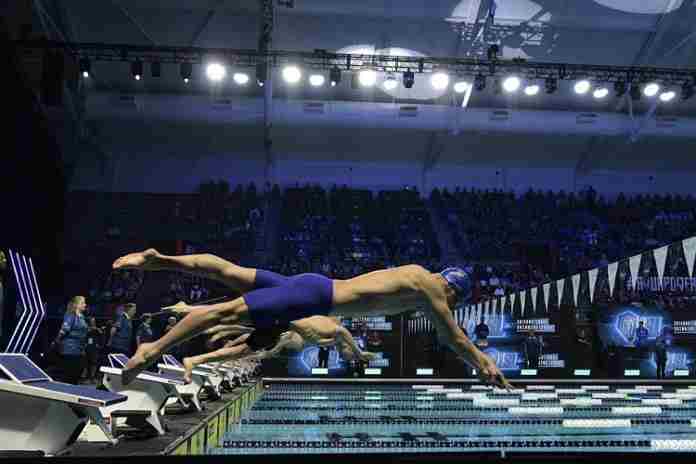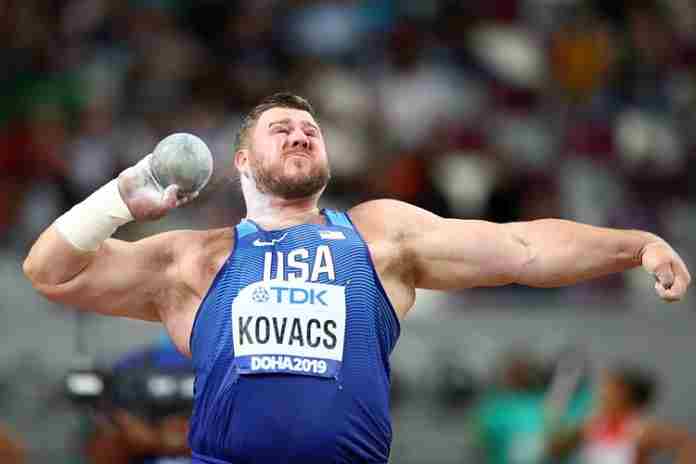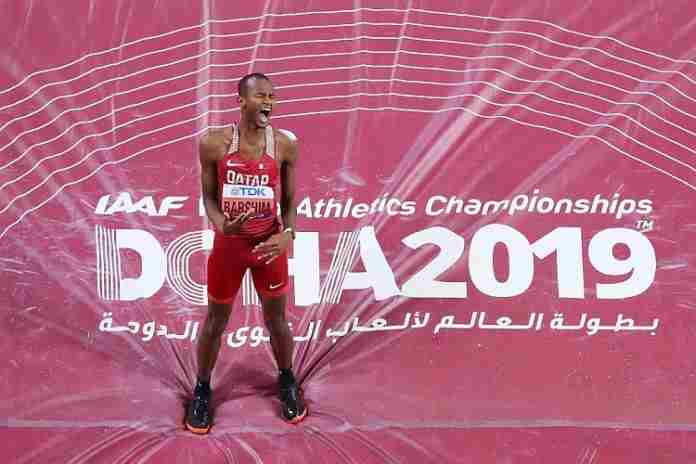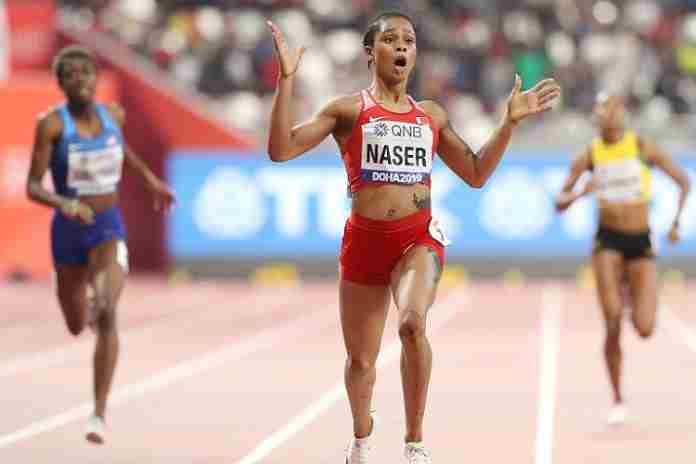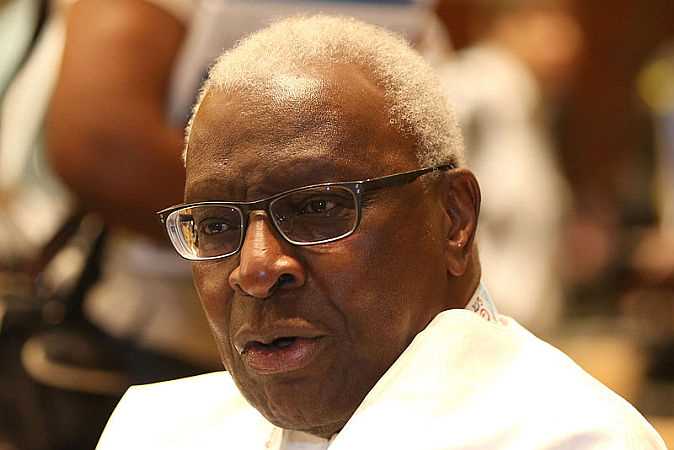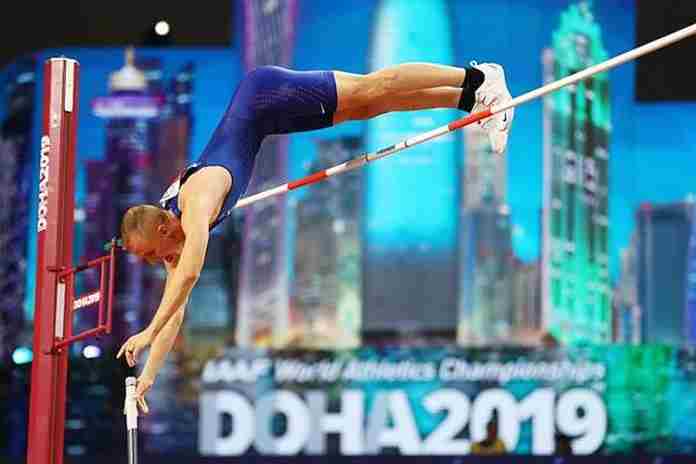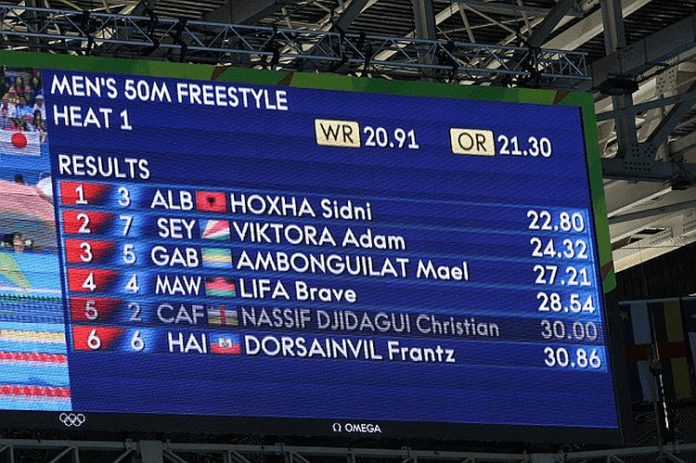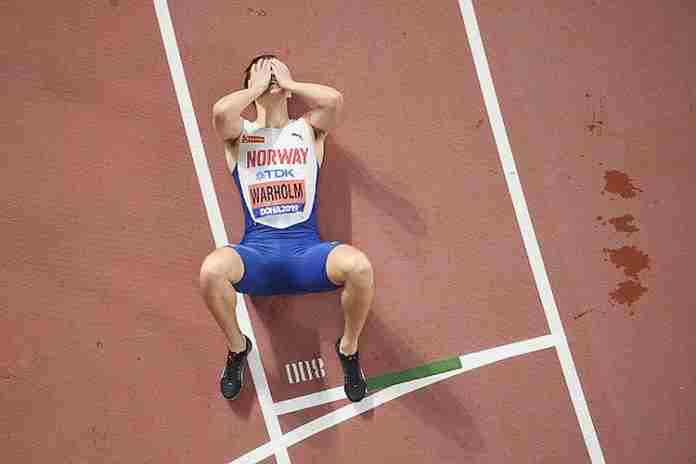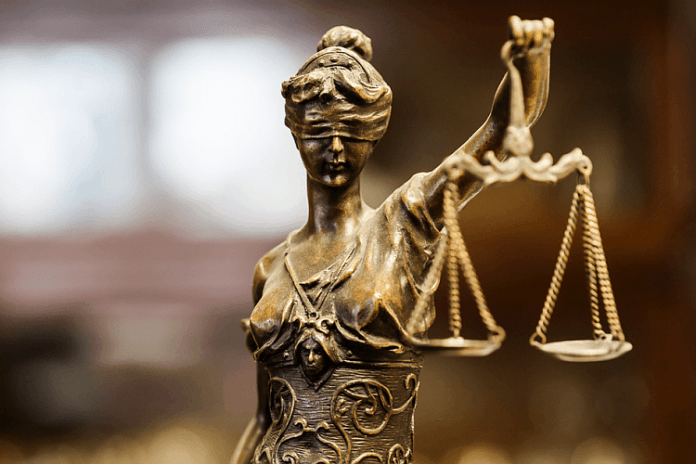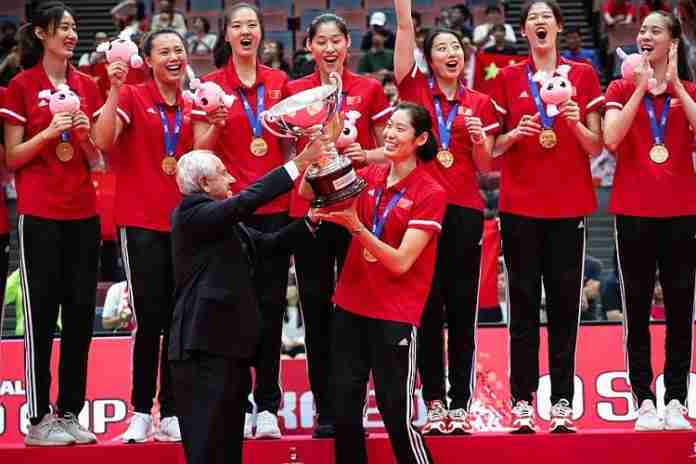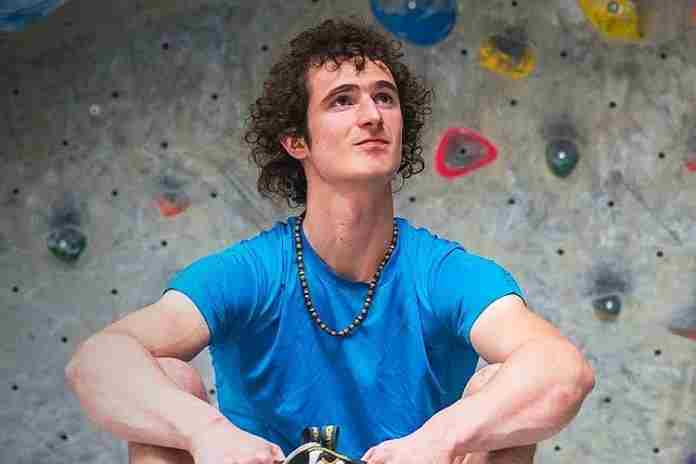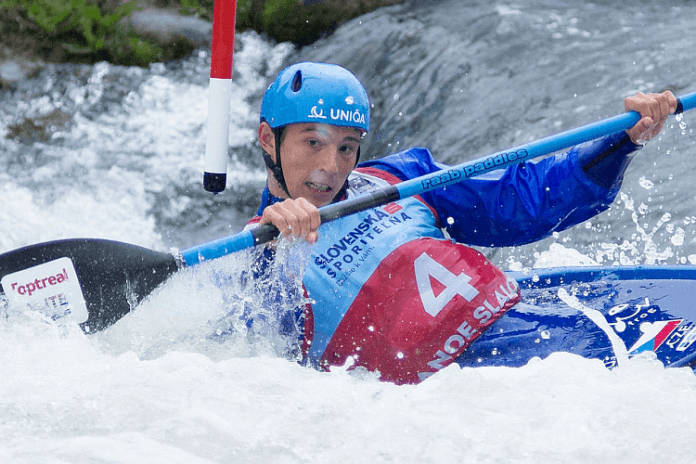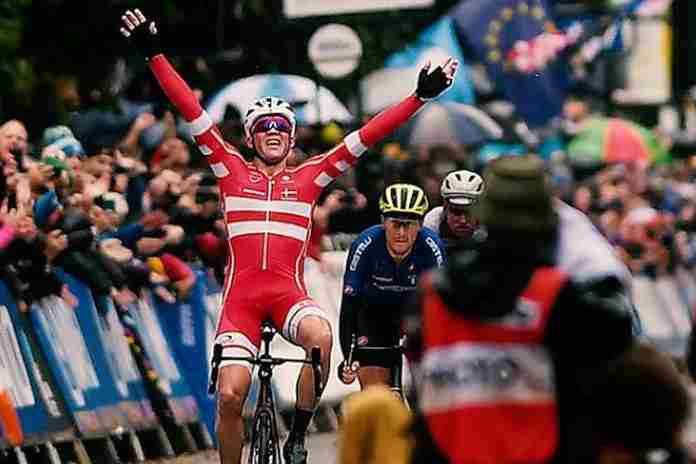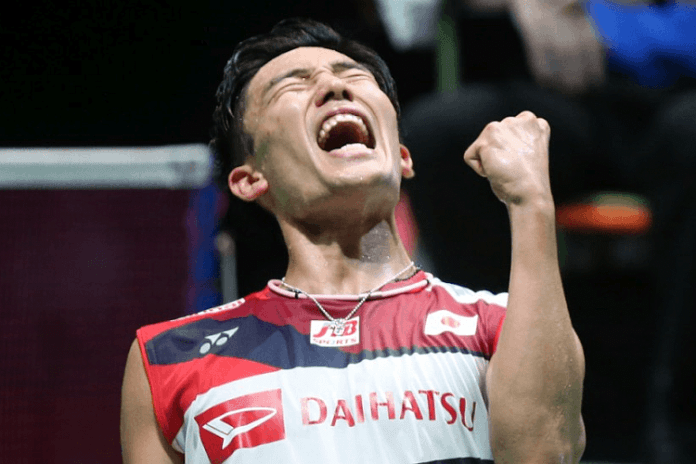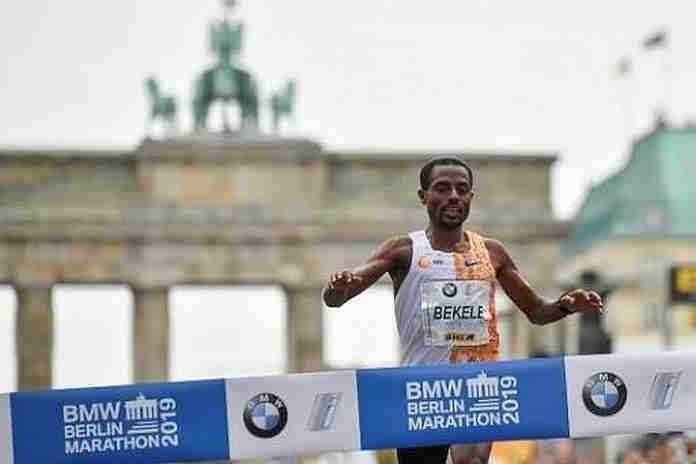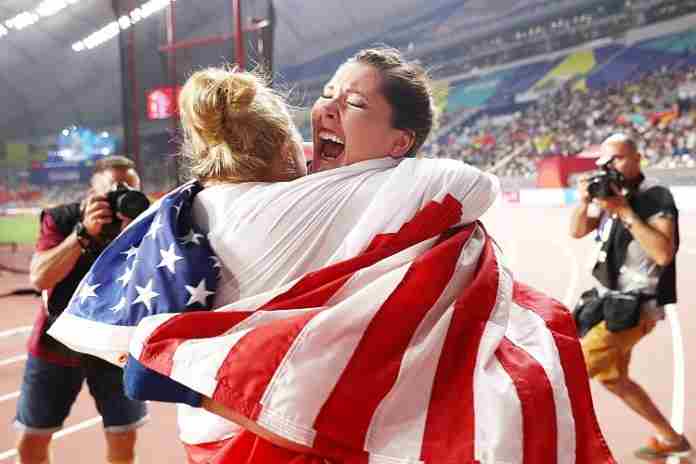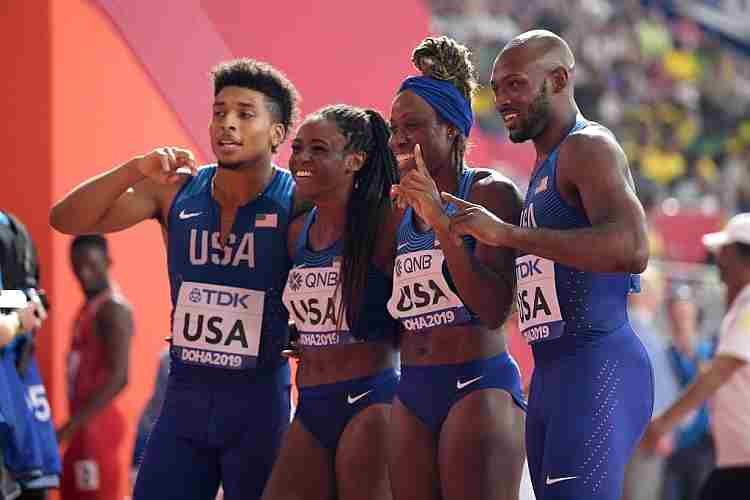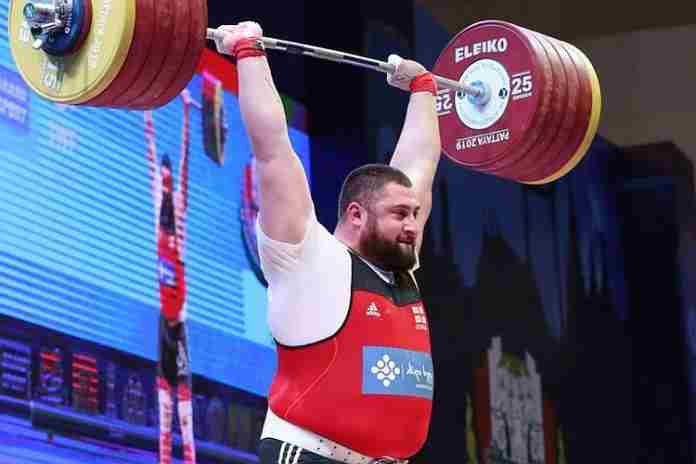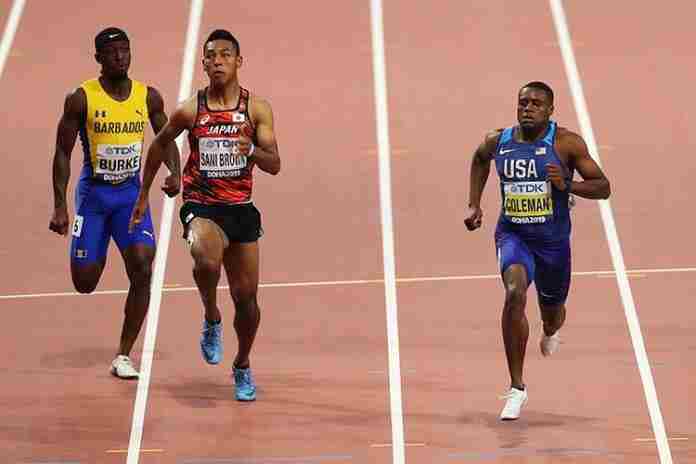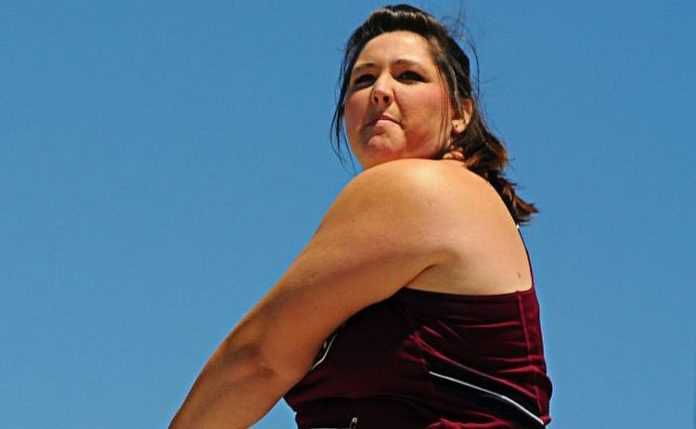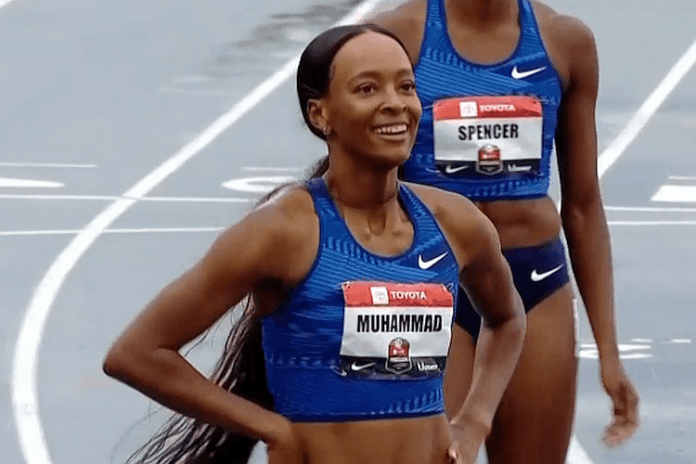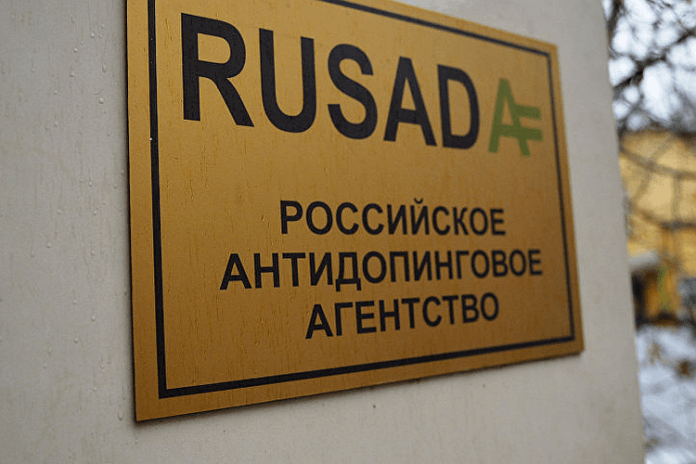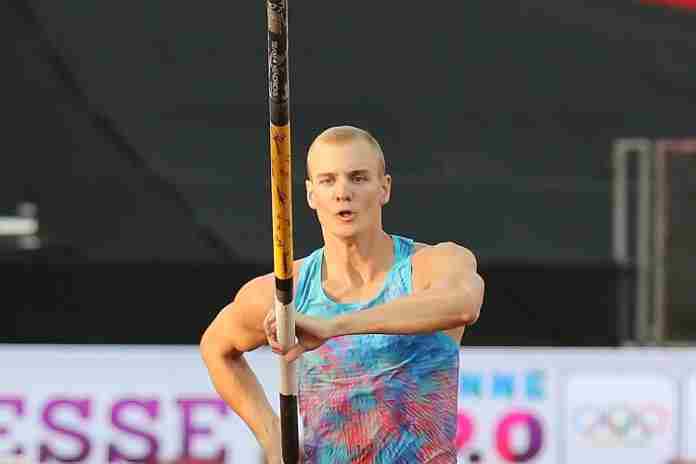The Doha experiment is over and one of the most enjoyable IAAF World Championships ever concluded in Qatar with a marvelous final day, especially for the U.S. relay teams and hurdler Nia Ali.
But the program also included amazing races in the men’s 1,500 m and 10,000 m, both of which were mesmerizing examples of the right tactics at the right moment.
In the men’s 1,500 m, favored Tim Cheruiyot of Kenya decided to run hard from the start, perhaps at a suicidal pace with teammate Ronald Kwemoi. The first 400 was in an astonishing 55.01 and 800 m was passed in 1:51.74!
There was no stopping him and he broke the race open on the third lap, running away from Kwemboi and continuing alone. At the bell, he had more than two seconds on everyone else and he continued on to finish in a sterling 3:29.26, his third sub-3:30 race this season!
Behind him, the fight was on for second and a large pack ran together for most of the race, well behind Cheruiyot and Kwemoi. On the final lap, Algeria’s Taoufik Makhloufi – the 2012 Olympic gold medalist and Rio silver medalist – still had speed in the final 50 m and took another silver in 3:31.38, followed by fast-closing Marcin Lewandowski (POL) in a national record of 3:31.46. Norway’s Jakob Ingebrigtsen was fourth in 3:31.70. Americans Matthew Centrowitz (3:32.81) and Craig Engels (3:34.24) finished eighth and 10th.
The men’s 10,000 m turned out not to be the slow, tactical affair everyone feared. Instead, the pace was fast from the start and crossed halfway in 13:33.20 with Kenya’s Rhonex Kipruto in the lead, with eight others in tow.
With three laps remaining, there were still nine on contention, but then Uganda’s Josh Cheptegei started pulling the pack apart. There were six in contention with 1,000 m left and just Cheptegei, Kipruto and Ethiopia’s Yomif Kejelcha left with two laps to go.
Those three were going to be the medalists, but in what order? Cheptegei had the lead with 400 m left and then he and Kejelcha went into a sprint down the backstraight and separated from Kipruto. Around the final turn, they were still close, but Cheptegei had more closing speed in the final 60 m and won in an outstanding 26:48.36, with a final lap of 55.38.
Kejelcha’s 26:49.34 was a lifetime best and Kipruto won the bronze at 26:50.32. Lopez Lamong was the top American finisher, setting a lifetime best by almost 26 seconds in 27:04.72, moving him to no. 3 all-time U.S., with the fourth-fastest performance ever.
Jamaica’s Danielle Williams was the clear favorite in the women’s 100 m hurdles, having run the world-leading 12.32. But the earlier semifinals showed that American Ali was going to make it close, having run a lifetime best 12.44 to Williams’ 12.41 in semi one. Tobi Amusan (NGR) had a lifetime best of 12.48 to win the third semi and Keni Harrison of the U.S. won the middle race in 12.58.
Off the gun in the final, Williams, Ali and Harrison all started well, but Ali was smooth over the hurdles and move away by the fifth hurdle, with Harrison also moving up. On the run-in, Ali was the clear leader and crossed first in another lifetime best of 12.34, with Harrison holding off Williams on the run-in for the silver in 12.46 and Williams in 12.47.
Ali moved to equal-9th all-time in the event and equal-fourth all-time U.S. The Rio 2016 silver medalist, she took her lap of honor with her two children in tow, a remarkable testament to her re-dedication to the sport after maternity.
The women’s 4×400 m appeared to be a shoo-in for the U.S., running the 4-5 finishers in the open 400 and the 1-2 finishers in the 400 m hurdles. It wasn’t a race; more like a time trial.
Phyllis Francis, the 2017 World Champion, led off and instead of her usual come-from-behind pattern, she took off from the start and had a huge lead in 49.51, handing off to Sydney McLaughlin. The race was essentially over by the time McLaughlin running to the curb, who had a lead of almost 15 m at the hand-off to Dalilah Muhammad. She extended the lead and the two hurdlers ran back-to-back legs of 49.78 and 49.43. Anchor Wadeline Jonathas had no trouble, finishing in 50.20 for a final time of 3:18.72, the sixth-fastest time in history.
Behind the U.S., Jamaica’s Shericka Jackson had the lead for the silver medal with 200 m to go, but was passed on the final straight by 2018 European champ Justyna Swiety-Ersetic of Poland, in a national record 3:21.89-3:22.37.
The final event was the men’s 4×400 m and the U.S. fielded a team of Fred Kerley, Michael Cherry, Wil London III and Rai Benjamin. Kerley ran a terrific 43.44 (!) and passed first to Cherry, who blew around the curve and moved to the inside lane first and gave the U.S. a solid lead of 5 m to London with a 44.63 leg.
The race was now for second and London steamed around the turn and extended the lead down the backstraight. He relaxed a little on the turn and Jamaica’s Terry Thomas made a move to get close coming into the home straight, but London had plenty in reserve and finished his 44.43 carry by handing to Benjamin.
Benjamin also ran the turn hard and now the only question was how fast the U.S. would run. Even easing up at the finish, his 44.19 leg brought the U.S. home in a sterling 2:56.69, the fastest since 2008 and the 12th-fastest 4×4 of all time.
On the infield, Germany’s Malaika Mihambo was expected to win the long jump and she did, convincingly. After two poor jumps, she found the range with a 7.30 m (23-11 1/2) bomb in the third round that proved to be the winner. She added jumps of 7.09 m (23-3 1/4) and 7.16 m (23-6) in the final two rounds to underscore the depth of her win. Ukraine’s Maryna Bekh-Romanchuk came through with a season’s best of 6.92 m (22-8 1/2) to move up to win the silver medal.
American Tori Bowie, who had withdrawn from the 100 m semis, scored a season’s best of 6.81 m (22-4 1/4) in the fourth round, but couldn’t improve and finished a creditable fourth, a hopeful finish to a disappointing year thanks to injuries.
The men’s javelin was a stunner, with Mississippi State’s NCAA champ Anderson Peters – from Grenada – getting a big first throw of 86.89 m (285-1), and no one could match it. Estonia’s Magnus Kirt, the seasonal leader, managed 86.21 m (282-10) on his second throw, but couldn’t improve and had to retire after a shoulder injury on his fifth throw. Defending champion Johannes Vetter (GER) managed only 85.37 m (280-1) for third.
The crowd was good for the final session and the razzmatazz introductions for the final were more appreciated now that everyone knew what to expect. Summaries of a remarkable – and memorable World Championships:
IAAF World Championships
Doha (QAT) ~ 27 September-6 October 2019
(Full results here)
Men
100 m (wind +0.6 m/s): 1. Christian Coleman (USA), 9.76; 2. Justin Gatlin (USA), 9.89; 3. Andre De Grasse (CAN), 9.90; 4. Akani Simbine (RSA), 9.93; 5. Yohan Blake (JAM), 9.97; 6. Zharnel Hughes (GBR), 10.03; 7. Flilppo Tortu (ITA), 10.07; 8. Aaron Brown (CAN), 10.08.
200 m (+0.3): 1. Noah Lyles (USA), 19.83; 2. Andre De Grasse (CAN), 19.95; 3. Alex Quinonez (ECU), 19.98; 4. Adam Gemili (GBR), 20.03; 5. Ramil Guliyev (TUR), 20.07; 6. Aaron Brown (CAN), 20.10; 7. Zhenye Xie (CHN), 20.14; 8. Kyle Greaux (TTO), 20.39.
400 m: 1. Steven Gardiner (BAH), 43.48; 2. Anthony Zambrano (COL), 44.15; 3. Fred Kerley (USA), 44.17; 4. Denish Gaye (JAM), 44.46; 5. Kirani James (GRN), 44.54; 6. Emanuel Korir (KEN), 44.94; 7. Machel Cedenio (TTO), 45.30; 8. Akeem Bloomfield (JAM), 45.36.
800 m: 1. Donavan Brazier (USA), 1:42.34 (American Record; old, 1:42.60, Johnny Gray, 1985); 2. Amel Tuka (BIH), 1:43.47; 3. Ferguson Rotich (KEN), 1:43.83; 4. Bryce Hoppel (USA), 1:44.25; 5. Wesley Vazquez (PUR), 1:44.48; 6. Adrian Ben (ESP), 1:45.58; 7. Marco Arop (CAN), 1:45.78; 8. Clayton Murphy (USA), 1:47.84.
1,500 m: 1. Timothy Cheruiyot (KEN), 3:29.26; 2. Taoufik Makhloufi (ALG), 3:31.38; 3. Marcin Lewandowski (POL), 3:31.46; 4. Jakob Ingebrigtsen (NOR), 3:31.70; 5. Jake Wightman (GBR), 3:31.87; 6. Josh Kerr (GBR), 3:32.52; 7. Ronald Kwemoi (KEN), 3:32.72; 8. Matthew Centrowitz (USA), 3:32.81. Also: 10. Craig Engels (USA), 3:34.24.
3,000 m Steeple: 1. Conseslus Kipruto (KEN), 8:01.35; 2. Lamecha Girma (ETH), 8:01.36; 3. Soufiane El Bakkali (MAR), 8:03.76; 4. Getnet Wale (ETH), 8:05.21; 5. Djilati Bedrani (FRA), 8:05.23; 6. Ben Kigen (KEN), 8:06.95; 7. Abraham Kibiwot (KEN), 8:08.52; 8. Hillary Bor (USA), 8:09.33. Also: 10. Stanley Kibenei (USA), 8:11.15; … 12. Andy Bayer (USA), 8:12.47.
5,000 m: 1. Muktar Edris (ETH), 12:58.85; 2. Selemon Barega (ETH), 12:59.70; 3. Mo Ahmed (CAN), 13:01.11; 4. Telahun Haile Bekele (ETH), 13:02.29; 5. Jakob Ingebrigtsen (NOR), 13:02.93; 6. Jacob Krop (KEN), 13:03.08; 7. Paul Chelimo (USA), 13:04.60; 8. Nicholas Kimeli (KEN), 13:05.27. Also: 11. Hassan Mead (USA), 13:27.05.
10,000 m: 1. Joshua Cheptegei (UGA), 26:48.36; 2. Yomif Kejelcha (ETH), 26:49.34; 3. Rhonex Kipruto (KEN), 26:50.32; 4. Rodgers Kwemoi (KEN), 26:55.36; 5. Andamlak Belihu (ETH), 26:56.71; 6. Mo Ahmed (CAN), 26:59.35; 7. Lopez Lomong (USA), 27:04.72; 8. Yemane Crippa (ITA), 27:10.76. Also: 10. Shadrack Kipchirchir (USA), 27:24.74; … 13. Leonard Kipkorir (USA), 28:05.73.
110 m hurdles (+0.6): 1. Grant Holloway (USA), 13.10; 2. Sergey Shubenkov (RUS), 13.15; 3. Pascal Martinot-Lagarde (FRA), 13.18; 4. Wenjun Xie (CHN), 13.29; 5. Orlando Ortega (ESP), 13.30; 6. Shane Brathwaite (BAR), 13.61; 7. Devon Allen (USA), 13.70; 8. Milan Trajkovic (CYP), 13.87; disqualified – Omar McLeod (JAM).
400 m hurdles: 1. Karsten Warholm (NOR), 47.42; 2. Rai Benjamin (USA), 47.66; 3. Abderrahmane Samba (QAT), 48.03; 4. Kyron McMaster (IVB), 48.10; 5. T.J. Holmes (USA), 48.20; 6. Yasmani Copello (TUR), 48.25; 7. Alison Dos Santos (BRA), 48.28; 8. Abdelmalik Lahoulou (ALG), 49.46.
20 km Walk: 1. Toshikazu Yamanishi (JPN), 1:26:34; 2. Vasiliy Mizinov (RUS), 1:26:49; 3. Perseus Karlstrom (SWE), 1:27:00; 4. Christopher Linke (GER), 1:27:19; 5. Salih Korkmaz (TUR), 1:27:35; 6. Koki Ineda (JPN), 1:29:02; 7. Tom Bosworth (GBR), 1:29:34; 8. Kaihua Wang (CHN), 1:29:52.
50 km Walk: 1. Yusuke Suzuki (JPN), 4:04:20; 2. Joao Vieira (POR), 4:04:59; 3. Evan Dunfee (CAN), 4:05:02; 4. Wenbin Niu (CHN), 4:05:36; 5. Yadong Luo (CHN), 4:06:49; 6. Brendan Boyce (IRL), 4:07:06; 7. Carl Dohmann (GER), 4:10:22; 8. Jesus Angel Garcia (ESP), 4:11:28.
4×100 m: 1. United States (Christian Coleman, Justin Gatlin, Mike Rodgers, Noah Lyles), 37.10 (American Record; old, 37.38, National Team, 2012 and 2015); 2. Great Britain (Gemili, Hughes, Kilty, Mitchell-Blake), 37.36; 3. Japan (Tada, Shiraishi, Kiryu, Sani Brown), 37.43; 4. Brazil, 37.72; 5. South Africa, 37.73; 6. China, 38.07; Netherlands was disqualified; France, did not finish.
4×400 m: 1. United States (Fred Kerley, Michael Cherry, Wil London, Rai Benjamin), 2:56.69; 2. Jamaica (Bloomfield, Allen, Thomas, Gaye), 2:57.90; 3. Belgium (Sacoor, Vanderbemden, D. Borlee, K. Borlee), 2:58.78; 4. Colombia, 2:59.50; 5. Trinidad & Tobago, 3:00.74; 6. Italy, 3:02.78; 7. France, 3:03.06; did not finish – Great Britain.
High Jump: 1. Mutaz Essa Barshim (QAT), 2.37 m (7-9 1/4); 2. Mikhail Akimenko (RUS), 2.35 m (7-8 1/2); 3. Ilya Ivanyuk (RUS), 2.35 m (7-8 1/2); 4. Maksim Nedasekau (BLR), 2.33 m (7-7 3/4); 5. Luis Zayas (CUB), 2.30 m (7-6 1/2); 6. Brandon Starc (AUS), 2.30 m (7-6 1/2); 7. Michael Mason (CAN), 2.30 m (7-6 1/2); 8. Hup Wei Lee (MAS), 2.27 m (7-5 1/4). Also: 11. Jeron Robinson (USA), 2.24 m (7-4 1/4).
Pole Vault: 1. Sam Kendricks (USA), 5.97 m (19-7); 2. Mondo Duplantis (SWE), 5.97 m (19-7); 3. Piotr Lisek (POL), 5.87 m (19-3); 4. Bo Lita Baehre (GER), 5.70 m (18-8 1/4); 5. Thiago Braz (BRA), 5.70 m (18-8 1/4); 6. tie, Raphael Holzdeppe (GER) and Valentin Lavillenie (FRA), 5.70 m (18-8 1/4); 8. Claudio Stecchi (ITA), 5.70 m (18-8 1/4). Also: 10. Cole Walsh (USA), 5.55 m (18-2 1/2).
Long Jump: 1. Tajay Gayle (JAM), 8.69 m (28-6 1/4); 2. Jeff Henderson (USA), 8.39 m (27-6 1/2); 3. Juan Miguel Echevarria (CUB), 8.34 m (27-4 1/2); 4. Luvo Manyonga (RSA), 8.28 m (27-2); 5. Ruswahl Samaai (RSA), 8.23 m (27-0); 6. Jianan Wang (CHN), 8.20 m (26-11); 7. Eusebio Caceres (ESP), 8.01 m (26-3 1/2); 8. Yuki Hashioka (JPN), 7.97 m (26-1 3/4).
Triple Jump: 1. Christian Taylor (USA), 17.92 m (58-9 1/2); 2. Will Claye (USA), 17.74 m (58-2 1/2); 3. Hugues Zango (BUR), 17.66 m (57-11 1/4); 4. Pedro Pablo Pichardo (POR), 17.62 m (57-9 3/4); 5. Cristian Napoles (CUB), 17.38 m (57-0 1/4); 6. Donald Scott (USA), 17.17 m (56-4); 7. Alexis Copello (AZE), 17.10 m (57-1 1/4); 8. Jordan Diaz Fortun (CUB), 17.06 m (55-11 3/4).
Shot Put: 1. Joe Kovacs (USA), 22.91 m (75-2); 2. Ryan Crouser (USA), 22.90 m (75-1 3/4); 3. Tom Walsh (NZL), 22.90 m (75-1 3/4); 4. Darlan Romani (BRA), 22.53 m (7311); 5. Darrell Hill (USA), 21.65 m (71-0 1/2); 6. Konrad Bukowiecki (POL), 21.46 m (); 7. Jacko Gill (NZL), 21.45 m (70-4 1/2); 8. Chukwuebeka Enekwechi (NGR), 21.18 m (66-2 1/2).
Discus: 1. Daniel Stahl (SWE), 67.59 m (221-9); 2. Fedrick Dacres (JAM), 66.94 m (219-7); 3. Lukas Weisshaidinger (AUT), 66.82 m (219-3); 4. Alin Firfirica (ROU), 66.46 m (218-0); 5. Apostolos Parellis (CYP), 66.32 m (217-7); 6. Matthew Denny (AUS), 65.43 m (214-8); 7. Ehsan Hadadi (IRI), 65.16 m (213-9); 8. Martin Wierig (GER), 64.98 m (213-2). Also: 11. Sam Mattis (USA), 63.42 m (208-1).
Hammer: 1. Pawel Fajdek (POL), 80.50 (264-1); 2. Quentin Bigot (FRA), 78.19 m (256-6); 3. Bence Halasz (HUN), 78.18 m (256-6); 4. Wojciech Nowicki (POL), 77.69 m (254-10); 5. Mykhaylo Kokhan (UKR), 77.39 m (253-11); 6. Eivind Henriksen (NOR), 77.38 m (253-10); 7. Javier Cienfuegos (ESP), 76.57 m (251-2); 8. Hleb Dudarau (BLR), 76.00 m (249-4). Also: 11. Rudy Winkler (USA), 75.20 m (246-9).
Decathlon: 1. Niklas Kaul (GER), 8,691; 2. Maicel Uibo (EST), 8,604; 3. Damian Warner (CAN), 8,529; 4. Ilya Shkurenyov (RUS), 8,494; 5. Pierce LaPage (CAN), 8,445; 6. Janek Oiglane (EST), 8,297; 7. Pieter Braun (NED), 8,222; 8. Solomon Simmons (USA), 8,151. Also: 14. Harrison Williams (USA), 7,892.
Javelin: 1. Anderson Peters (GRN), 86.89 m (285-1); 2. Magnus Kirt (EST), 86.21 m (282-10); 3. Johannes Vetter (GER), 85.37 m (280-1); 4. Lassi Etelatalo (FIN), 82.49 m (270-7); 5. Jakub Vadlejch (CZE), 82.19 m (269-8); 6. Julian Weber (GER), 81.26 m (266-7); 7. Marcin Krukowski (POL), 80.56 m (264-4); 8. Kim Amb (SWE), 80.42 m (263-10).
Women
100 m (+0.1): 1. Shelly-Ann Fraser-Pryce (JAM), 10.71; 2. Dina Asher-Smith (GBR), 10.83; 3. Marie-Josee Ta Lou (CIV), 10.90; 4. Elaine Thompson (JAM), 10.93; 5. Murielle Ahoure (CIV), 11.02; 6. Jonielle Smith (JAM), 11.06; 7. Teahna Daniels (USA), 11.19; did not start – Dafne Schippers (NED).
200 m (+0.9): 1. Dina Asher-Smith (GBR), 21.88; 2. Brittany Brown (USA), 22.22; 3. Mujinga Kambundji (SUI), 22.51; 4. Angie Annelus (USA), 22/59; 5. Dezerea Bryant (USA), 22.63; 6. Gina Bass (GAM), 22.71; 7. Ivet Lalova-Collio (BUL), 22.77; 8. Tynia Gaither (BAH), 22.90.
400 m: 1. Salwa Eid Naser (BAH), 48.14; 2. Shaunae Miller-Uibo (BAH), 48.37; 3. Shericka Jackson (JAM), 49.47; 4. Wadeline Jonathas (USA), 49.60; 5. Phyllis Francis (USA), 49.61; 6. Stephanie Ann McPherson (JAM), 50.89; 7. Justyna Swiety-Ersetic (POL), 50.95; 8. Iga Baumgart-Witen (POL), 51.29.
800 m: 1. Halimah Nakaayi (UGA), 1:58.04; 2. Raevyn Rogers (USA), 1:58.18; 3. Ajee Wilson (USA), 1:58.84; 4. Winnie Nanyondo (UGA), 1:59.18; 5. Eunice Sum (KEN), 1:59.71; 6. Natoya Goule (JAM), 2:00.11; 7. Rababe Arafi (MAR), 2:00.48; 8. Ce’Aira Brown (USA), 2:02.97.
1,500 m: 1. Sifan Hassan (NED), 3:51.95; 2. Faith Kipyegon (KEN), 3:54.22; 3. Gudaf Tsegay (ETH), 3:54.38; 4. Shelby Houlihan (USA), 3:54.99 (American Record; old, 3:56.29, Shannon Rowbury, 2015); 5. Laura Muir (GBR), 3:55.76; 6. Gabriela Dubues-Stafford (CAN), 3:56.12; 7. Winny Chebet (KEN), 3:58.20; 8. Jenny Simpson (USA), 3:58.42.
3,000 m Steeple: 1. Beatrice Chepkoech (KEN), 8:57.84; 2. Emma Coburn (USA), 9:02.35; 3. Gesa Krause (GER), 9:03.30; 4. Winfred Yavi (BRN), 9:05.68; 5. Peruth Chemutai (UGA), 9:11.08; 6. Courtney Frerichs (USA), 9:11.27; 7. Anna Moller (DEN), 9:13.46; 8. Hyvin Kiyeng (KEN), 9:13.53.
5,000 m: 1. Hellen Obiri (KEN), 14:26.72; 2. Margaret Kipkemboi (KEN), 14:27.49; 3. Konstanze Klosterhalfen (GER), 14:28.43; 4. Tsehay Gemechu (ETH), 14:29.60; 5. Lilian Rengeruk (KEN), 14:36.05; 6. Fantu Worku (ETH), 14:30.47; 7. Laura Weightman (GBR), 14:44.57; 8. Hawi Feysa (ETH), 14:44.92. Also: 9. Karissa Schweizer (USA), 14:45.18; … 11. Elinor Purrier (USA), 14:58.17.
10,000 m: 1. Hassan (NED), 30.17.62; 2. Letesenbet Gidey (ETH), 30:21.23; 3. Agnes Tirop (KEN), 30:25.20; 4. Rosemary Wanjiru (KEN), 30:35.75; 5. Obiri (KEN), 30:35.82; 6. Senbere Teferi (ETH), 30:44.23; 7. Susan Krumins (NED), 31:05.40; 8. Marielle Hall (USA), 31:05.71. Also: 9. Molly Huddle (USA), 31:07.24; 10. Emily Sisson (USA), 31:12.56.
Marathon: 1. Ruth Chepngetich (KEN), 2:32:43; 2. Rose Chelimo (BRN), 2:33:46; 3. Helelia Johannes (NAM), 2:34:15; 4. Edna Kiplagat (KEN), 2:35:36; 5. Volha Mazuronak (BLR), 2:36:21; 6. Roberta Groner (USA), 2:38:44; 7. Mizuki Tanimoto (JPN), 2:39:09; 8. Ji Hyang Kim (PRK), 2:41:24. Also: 13. Carrie Dimoff (USA), 2:44:35.
100 m hurdles (+0.3): 1. Nia Ali (USA), 12.34; 2. Keni Harrison (USA), 12.46; 3. Danielle Williams (JAM), 12.47; 4. Tobi Amusan (NGR), 12.49; 5. Andrea Vargas (CRC), 12.64; 6. Nadine Visser (NED), 12.66; 7. Janeek Brown (JAM), 12.88; did not finish – Megan Tapper (JAM).
400 m hurdles: 1. Dalilah Muhammad (USA), 52.16 (World Record; old, 52.20, Muhammad, 2019); 2. Sydney McLaughlin (USA), 52.23; 3. Rushell Clayton (JAM), 53.74; 4. Lea Sprunger (SUI), 54.06; 5. Zuzana Hejnova (CZE), 54.23; 6. Ashley Spencer (USA), 54.45; 7. Anna Ryzhykova (UKR), 54.45; 8. Sage Watson (CAN), 54.82.
4×100 m: 1. Jamaica (Whyte, Fraser-Pryce, Smith, Jackson), 41.44; 2. Great Britain (Philip, Asher-Smith, Nelson, Neita), 41.85; 3. United States (Dezerea Bryant, Teahna Daniels, Morolake Akinosun, Kiara Parker), 42.10; 4. Switzerland, 42.18; 5. Germany, 42.48; 6. Trinidad & Tobago, 42.71; 7. Italy, 42.98; China was disqualified.
4×400 m: 1. United States (Phyllis Francis, Dalilah Muhammad, Sydney McLaughlin, Wadeline Jonathas), 3:18.92; 2. Poland (Baumgart-Wyciszkiewicz, Holub-Kowalik, Swiety-Ersetic), 3:21.89; 3. Jamaica (Le-Roy, James, McPherson, , Jackson), 3:22.37; 4. Great Britain (Clark, Williams, Diamond, Nielsen), 3:23.02; 5. Canada, 3:25.91; 6. Belgium, 3:27.15; 7. Ukraine, 3:27.48; 8. Netherlands, 3:27.89.
20 km Walk: 1. Hong Liu (CHN), 1:32:53; 2. Shenjie Qieyang (CHN), 1:33:10; 3. Liujing Yang (CHN), 1:33:17; 4. Erica Rocha de Sena (BRA), 1:33:36; 5. Sandra Arenas (COL), 1:34:16; 6. Kumiko Okada (JPN), 1:34:36; 7. Nanako Fujii (JPN), 1:34:50; 8. Maria Perez (ESP), 1:35:43. Also: 35. Maria Michta-Coffey (USA), 1:46:02.
50 km Walk: 1. Rui Liang (CHN), 4:23:26; 2. Maocuo Li (CHN), 4:26:40; 3. Elenorora Giorgi (ITA), 4:29:13; 4. Olena Sobchuk (UKR), 4:33:38; 5. Faying Ma (CHN), 4:34:56; 6. Khrystyna Yudkina (UKR), 4:36:00; 7. Magaly Bonilla (ECU), 4:37:03; 8. Julia Takacs (ESP), 4:38:20. Also: 17. Katie Burnett (USA), 5:23:05.
High Jump: 1. Mariya Lasitskene (RUS), 2.04 m (6-8 1/4); 2. Yaroslava Mahuchikh (UKR), 2.04 m (6-8 1/4); 3. Vashti Cunningham (USA), 2.00 m (6-6 3/4); 4. Yuliya Levchenko (UKR), 2./00 m (6-6 3/4); 5. Kamila Licwinko (POL), 1.98 m (6-6); 6. Karyna Demidik (BLR), 1.96 m (6-5); 7. Ana Simic (CRO), 1.93 m (6-4); 8. Ty Butts (USA), 1.93 m (6-4).
Pole Vault: 1. Anzhelika Sidorova (RUS), 4.95 m (16-2 3/4); 2. Sandi Morris (USA), 4.90 m (16-0 3/4); 3. Katerina Stefanidi (GRE), 4.85 m (15-11); 4. Holly Bradshaw (GBR), 4.80 m (15-9); 5. Alysha Newman (CAN), 4.80 m (15-9); 6. Angelica Bengtsson (SWE), 4.80 m (15-9); 7. tie, Iryna Zhuk (BLR), Jenn Suhr (USA) and Katie Nagetotte (USA), 4.70 m (15-5).
Long Jump: 1. Malaika Mihambo (GER), 7.30 m (23-11 1/2); 2. Maryna Bekh-Romanchuk (UKR), 6.92 m (22-8 1/2); 3. Ese Brume (NGR), 6.91 m (22-8); 4. Tori Bowie (USA), 6.81 m (22-4 1/4); 5. Nastassia Mironchyk-Ivanova (BUL), 6.76 m (22-2 1/4); 6. Aline Rotaro (ROU), 6.71 m (22-0 1/4); 7. Abigail Irozuru (GBR), 6.64 m (21-9 1/2); 8. Chanice Porter (JAM), 6.56 m (21-6 1/4). Also: 9. Shakeela Saunders (USA), 6.54 m (21-5 1/2).
Triple Jump: 1. Yulimar Rojas (VEN), 15.37 m (50-5 1/4); 2. Shanieka Ricketts (JAM), 14.92 m (48-11 1/2); 3. Caterine Ibarguen (COL), 14.73 m (48-4); 4. Kimberly Williams (JAM), 14.64 m (48-0 1/2); 5. Olha Saladukha (UKR), 14.52 m (47-7 3/4); 6. Ana Peleteiro (ESP), 14.47 m (47-5 3/4); 7. Keturah Orji (USA), 14.46 m (47-5 1/4); 8. Patricia Mamona (POR), 14.40 m (47-3). Also: 9. Tori Franklin (USA), 14.08 , (46 2 1/2).
Shot: 1. Lijiao Gong (CHN), 19.55 m (64-1 3/4); 2. Danniel Thomas-Dodd (JAM), 19.47 m (63-10 1/2); 3. Christina Schwanitz (GER), 19.17 m (62-10 3/4); 4. Maggie Ewen (USA), 18.93 m (62-1 1/4); 5. Anita Marton (HUN), 18.86 m (61-10 1/2); 6. Aliona Dubitskaya (BLR), 18.86 m (61-10 1/2); 7. Chase Ealey (USA), 18.82 m (61-9); 8. Brittany Crew (CAN), 18.55 m (60-10 1/2). Also: 9. Michelle Carter (USA), 18.41 m (60-4 3/4).
Discus: 1. Jaime Perez (CUB), 69.17 m (226-11); 2. Denia Caballero (CUB), 68.44 m (224-6); 3. Sandra Perkovic (CRO), 66.72 m (218-11 ); 5. Yang Chen (CHN), 63.38 m (207-11); 6. Bin Feng (CHN), 62.48 m (205-0); 7. Fernanda Martins (BRA), 62.44 m (204-10); 8. Valarie Allman (USA), 61.82 m (202-10).
Hammer: 1. DeAnna Price (USA), 77.54 m (251-1); 2. Joanna Fiodorow (POL), 76.35 m (250-6); 3. Zheng Wang (CHN), 74.76 m (245-3); 4. Zalina Petrivskaya (MDA), 74.33 m (243-10); 5. Iryna Klymets (UKR), 73.56 m (241-4); 6. Alexandra Tavernier (FRA), 73.33 m (240-7); 7. Hanna Skydan (AZE), 72.83 m (238-11); 8. Na Luo (CHN), 72.04 m (236-4).
Javelin: 1. Kelsey-Lee Barber (AUS), 66.56 m (218-4); 2. Shiyeng Liu (CHN), 65.88 m (216-2); 3. Huihui Lyu (CHN), 65.49 m (214-10); 4. Christin Hussong (GER), 65.21 m (213-11); 5. Kara Winger (USA), 63.23 m (207-5); 6. Tatsiana Khaladovich (BLR), 62.54 m (205-2); 7. Sara Kolak (CRO), 62.28 m (204-4); 8. Annu Rani (IND), 61.12 m (200-6).
Heptathlon: 1. Katarina Johnson-Thompson (GBR), 6,981; 2. Nafi Thiam (BEL), 6,677; 3. Verena Preiner (AUT), 6,560; 4. Erica Bougard (USA), 6,470; 5. Kendell Williams (USA), 6.415; 6. Nadine Broersen (NED), 6,392; 7. Emma Oosterwegel (NED), 6,250; 8. Odite Ahouanwanou (BEN), 6,210. Also: 12. Chari Hawkins (USA), 6,073; 13. Annie Kunz (USA), 6,067.
Mixed
4×400 m: 1. United States (Wil London, Allyson Felix, Courtney Okolo, Michael Cherry), 3:09.34 (World Record; old, 3:12.42, U.S. in semis); 2. Jamaica, (Allen, McGregor, James, Francis), 3:11.78; 3. Bahrain (Isah, Jamal, Naser, Abbas), 3:11.82; 4. Great Britain, 3:12.27; 5. Poland, 3:12.33; 6. Belgium, 3:14.22; 7. India, 3:15.77; 8. Brazil, 3:16.22.


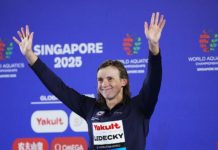
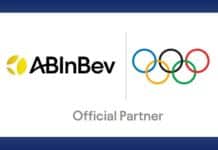

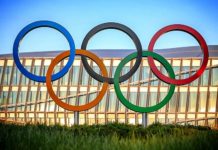
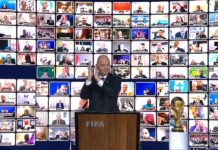
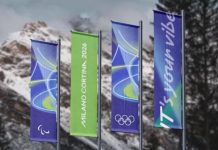






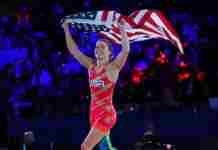
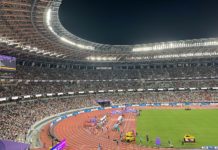



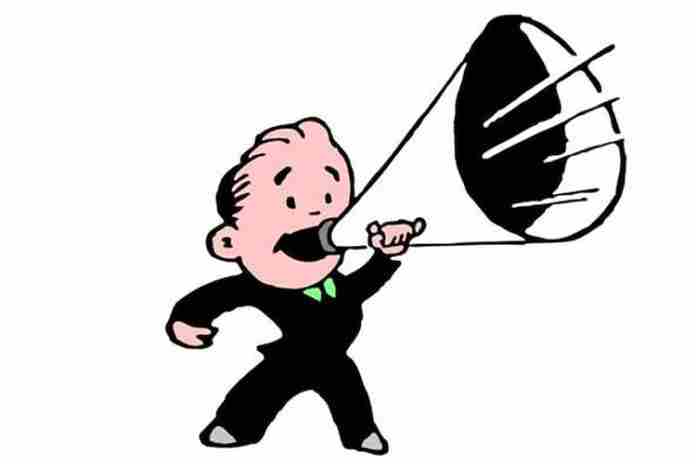
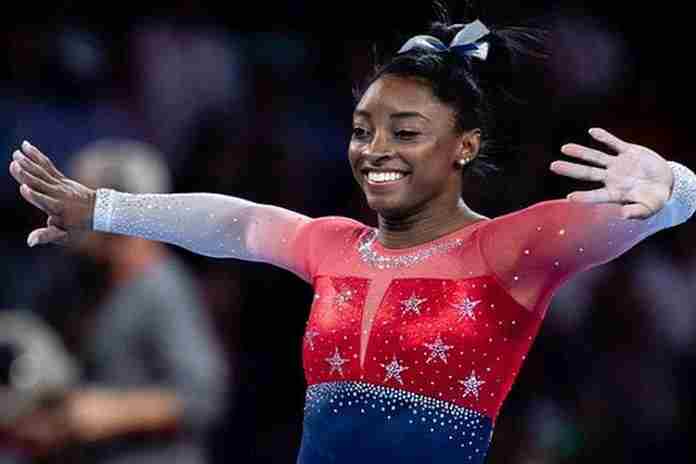
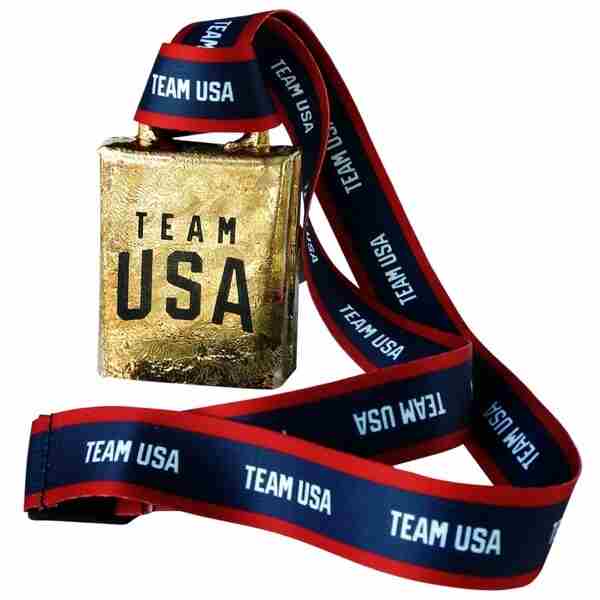
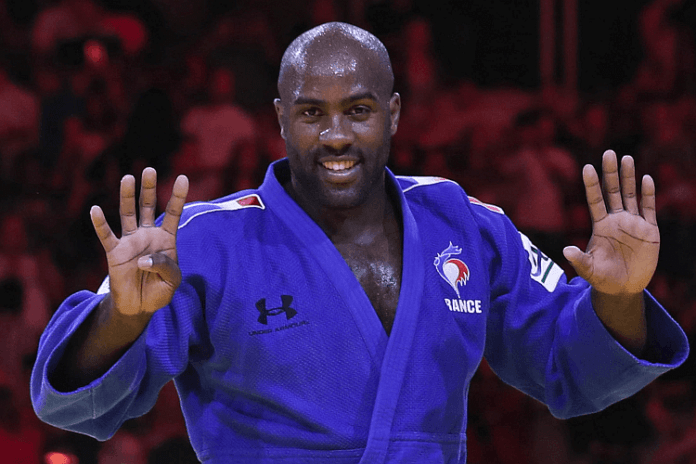
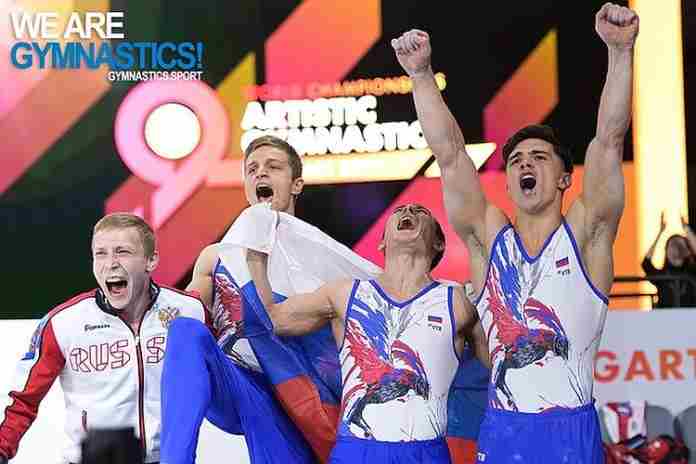
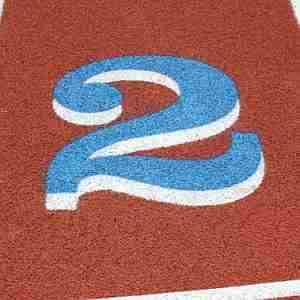 Apologies to those looking for the TSX Report for Tuesday, 8 October in their e-mail inbox. It’s never a pleasure to experience computer issues, but these have been overcome and we’re online again.
Apologies to those looking for the TSX Report for Tuesday, 8 October in their e-mail inbox. It’s never a pleasure to experience computer issues, but these have been overcome and we’re online again.
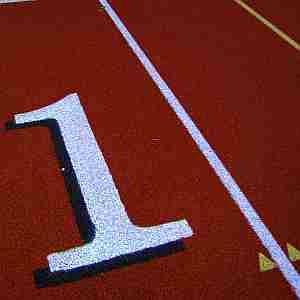 Ask a world-class athlete with individual sponsors about the bad aspects of being on a U.S. Olympic Team, and the answer will inevitable come back in two words: Rule 40.
Ask a world-class athlete with individual sponsors about the bad aspects of being on a U.S. Olympic Team, and the answer will inevitable come back in two words: Rule 40.